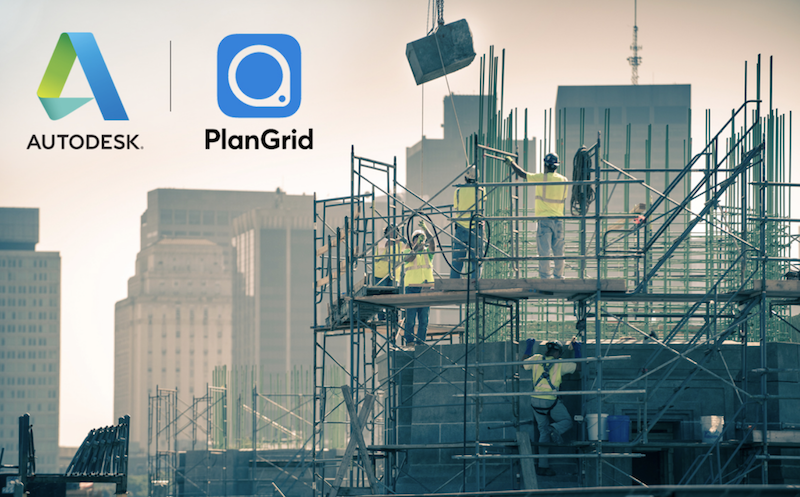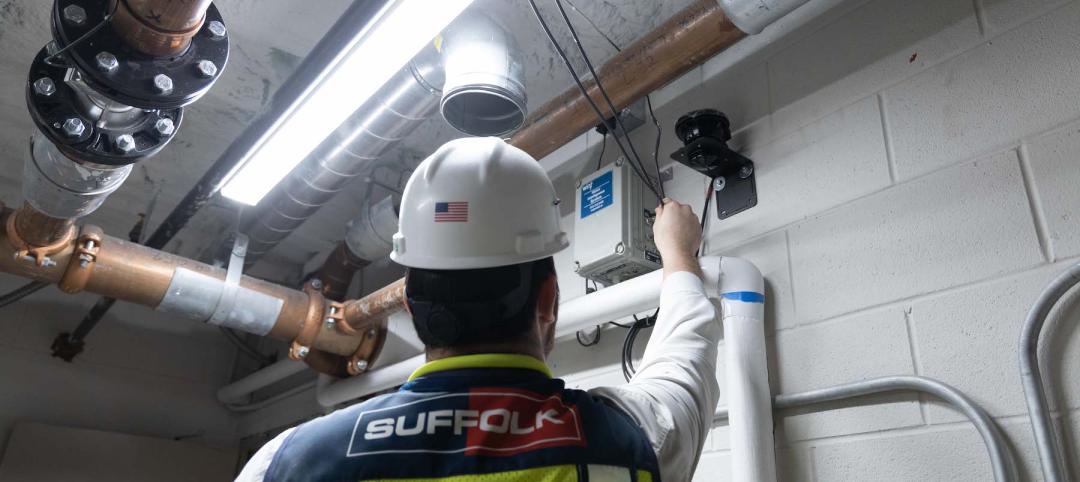In keeping with an aggressive business plan focused on software development for the construction industry, Autodesk has made two key acquisitions that it hopes will broaden its construction management platforms.
Today, the company says that it has completed its $875 million cash acquisition of PlanGrid, a seven-year-old startup based in San Francisco, which provides construction productivity software that enables GCs, subcontractors, and owners to have real-time access to project plans, digital blueprints, punch lists, work tasks, progress imagery, daily field reports, and submittals.
Also today, Autodesk discloses that it has signed a definitive agreement to acquire BuildingConnected for $275 million in net cash. San Francisco-based BuildingConnected was founded in 2012, and has grown to become the largest digital network of construction professionals, with more than 700,000 people in its database. Its cofounder Dustin DeVan had been a general contractor before starting the company, which currently has about 180 employees.
BuildingConnected helps owners and GCs find and hire qualified contractors for their projects. It moves Autodesk into preconstruction planning to help contractors decide which subs and suppliers to go with. It includes TradeTapp, a subcontractor risk analysis platform; and Bid Board Pro, a platform that helps subs manage and win more bids. BuildingConnected’s customers include such contractor giants as Turner, McCarthy, Mortenson, StructureTone, Skanska, Clark, Ryan Companies, and AECOM.
(Autodesk has taken a particular interest in developing products that get subs more involved earlier in projects. At its recent Autodesk University event in Las Vegas, Autodesk showcased its strategic alliance with eSub Construction Software, a cloud-based system of record for trades to plan and track their employees’ productivity. eSub is the field data component within Autodesk’s BIM 360 platform.)
Its latest acquisition “provides an opportunity for Autodesk and BuildingConnected to connect every business in the construction industry, becoming the definitive source of information throughout the sector,” says Jim Lynch, Vice President and General Manager, Autodesk Construction Solutions. “Our tools empower all stakeholders with greater visibility and better information to make immediate decisions. We’re excited about creating a robust digital marketplace for the global construction industry, helping to boost productivity, while lowering cost and risk.”

BuildingConnected has 700,000 trades in its database, and helps contractors select the best subs and suppliers for their projects. Image: Autodesk
A late bloomer when it comes to implementing technology, the construction sector is now embracing tech to help manage projects at a time when the industry is grappling with labor shortages and other factors that cause 70% of construction projects to be delivered late and/or over budget.
Capturing, analyzing, and disseminating design- and construction-related data are the primary objectives of Autodesk’s product development and expansion strategies. “We are trying to completely digitize the construction process all the way from design to build,” Andrew Anagnost, Autodesk’s evangelical CEO, tells Forbes. “With the completion of [the purchase of] BuildingConnected, we feel we have acquired all the important assets we need to acquire.”
Clayco, the design-build firm, chose Autodesk BIM 360 and PlanGrid to help digitize each step of the construction process in order to accelerate project delivery, reduce risk and increase productivity. “I’m excited to see how Autodesk and PlanGrid will work together to encourage collaboration between the project team and owners from the time a building is conceived, all the way through to handover,” says Bob Clark, Clayco’s founder and CEO.
Autodesk expects PlanGrid to contribute approximately $100 million in annual recurring revenue. Autodesk does not project any ARR from its acquisition of BuildingConnected.
Related Stories
Mass Timber | May 3, 2023
Gensler-designed mid-rise will be Houston’s first mass timber commercial office building
A Houston project plans to achieve two firsts: the city’s first mass timber commercial office project, and the state of Texas’s first commercial office building targeting net zero energy operational carbon upon completion next year. Framework @ Block 10 is owned and managed by Hicks Ventures, a Houston-based development company.
AEC Tech | May 1, 2023
Utilizing computer vision, AI technology for visual jobsite tasks
Burns & McDonnell breaks down three ways computer vision can effectively assist workers on the job site, from project progress to safety measures.
Design Innovation Report | Apr 27, 2023
BD+C's 2023 Design Innovation Report
Building Design+Construction’s Design Innovation Report presents projects, spaces, and initiatives—and the AEC professionals behind them—that push the boundaries of building design. This year, we feature four novel projects and one building science innovation.
Building Technology | Apr 24, 2023
Let’s chat about AI: How design and construction firms are using ChatGPT
Tech-savvy AEC firms that already use artificial intelligence to enhance their work view the startling evolution of ChatGPT mostly in a positive light as a potential tool for sharing information and training employees and trade partners. However, the efficacy of ChatGPT is likely to rest on the construction industry’s aggregation of quality data that, until recently, has been underwhelming for getting the greatest bang from AI and machine learning.
Design Innovation Report | Apr 19, 2023
HDR uses artificial intelligence tools to help design a vital health clinic in India
Architects from HDR worked pro bono with iKure, a technology-centric healthcare provider, to build a healthcare clinic in rural India.
3D Printing | Apr 11, 2023
University of Michigan’s DART Laboratory unveils Shell Wall—a concrete wall that’s lightweight and freeform 3D printed
The University of Michigan’s DART Laboratory has unveiled a new product called Shell Wall—which the organization describes as the first lightweight, freeform 3D printed and structurally reinforced concrete wall. The innovative product leverages DART Laboratory’s research and development on the use of 3D-printing technology to build structures that require less concrete.
Contractors | Apr 10, 2023
What makes prefabrication work? Factors every construction project should consider
There are many factors requiring careful consideration when determining whether a project is a good fit for prefabrication. JE Dunn’s Brian Burkett breaks down the most important considerations.
Smart Buildings | Apr 7, 2023
Carnegie Mellon University's research on advanced building sensors provokes heated controversy
A research project to test next-generation building sensors at Carnegie Mellon University provoked intense debate over the privacy implications of widespread deployment of the devices in a new 90,000-sf building. The light-switch-size devices, capable of measuring 12 types of data including motion and sound, were mounted in more than 300 locations throughout the building.
Cladding and Facade Systems | Apr 5, 2023
Façade innovation: University of Stuttgart tests a ‘saturated building skin’ for lessening heat islands
HydroSKIN is a façade made with textiles that stores rainwater and uses it later to cool hot building exteriors. The façade innovation consists of an external, multilayered 3D textile that acts as a water collector and evaporator.
Project + Process Innovation | Mar 22, 2023
Onsite prefabrication for healthcare construction: It's more than a process, it's a partnership
Prefabrication can help project teams navigate an uncertain market. GBBN's Mickey LeRoy, AIA, ACHA, LEED AP, explains the difference between onsite and offsite prefabrication methods for healthcare construction projects.
















